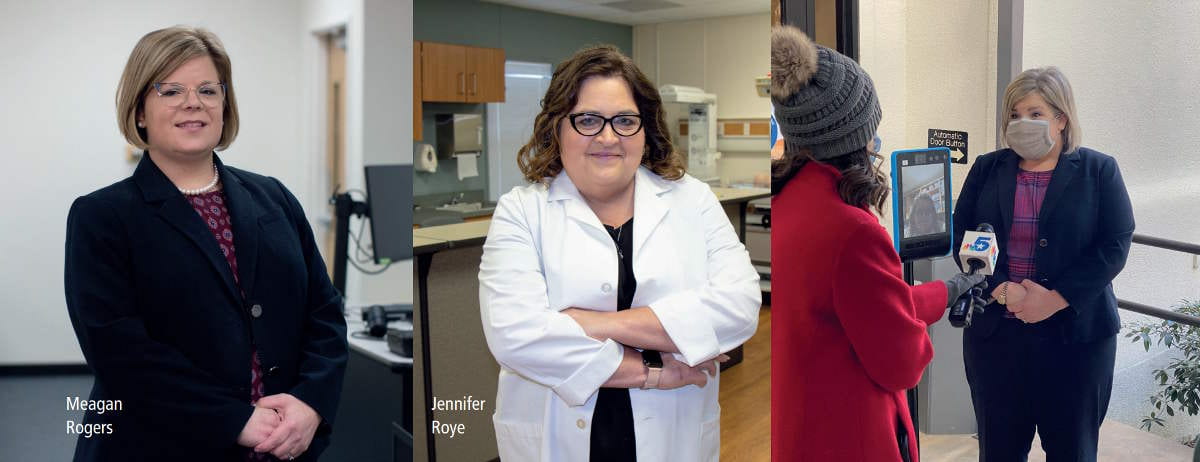TELEHEALTH AND NURSING EDUCATION DURING COVID-19
How two researchers are using telepresence technology to aid nursing education during the pandemic and beyond.

 The COVID-19 pandemic created daunting obstacles for nursing students, challenging two College of Nursing and Health Innovation researchers to discover innovative ways to facilitate clinical learning through the aid of telepresence technology.
The COVID-19 pandemic created daunting obstacles for nursing students, challenging two College of Nursing and Health Innovation researchers to discover innovative ways to facilitate clinical learning through the aid of telepresence technology.
CONHI researchers Jennifer Roye, Assistant Dean of Simulation and Technology, and Meagan Rogers, Ph.D., Undergraduate Nursing Associate Chair, received a $149,136 grant from the Texas Higher Education Coordinating Board’s Nursing Innovation Grant Program (NIGP) for their research on “Patient Remotely Operated Technology Education and Clinical Training (PROTECT) due to COVID-19.”
According to Rogers, the research component of their grant is designed to evaluate variations in student outcomes when robots are used in place of hands-on patient care.
“We are interested in how the learning experiences differ when students are observing remotely using the robot instead of providing direct patient care,” Rogers said.
The pandemic forced telehealth to the forefront of health care out of necessity. Understanding how we can educate nurses and provide unique learning experiences to our students despite the pandemic challenges helps us produce a diverse and competent future workforce.” —Meagan Rogers
Their research includes the use of telepresence robots, which are mobile computer tablets attached to wheels allowing for two-way video and audio communication. Devices such as these help enable faculty members or students to engage with patients and caregivers in a clinical space without physically being present.
“With the use of the telepresence robots, we are able to offer entire clinical groups the opportunity to interact with residents in facilities that might be more vulnerable to COVID without putting anyone in harm’s way,” Roye said.
Students have the opportunity to learn at the Smart Hospital, a clinical simulation education facility. There, students can practice conducting assessments, completing nursing procedures, and participating in clinical scenario simulations. The Smart Hospital also provides a location for students to observe remote interactions via the telepresence robots.
The grant has allowed Roye and Rogers to increase their stock of advanced training devices and telepresence robots, some of which have been deployed to a dementia care center where onsite nurses and patients virtually interacted with student participants, observing care-planning and enrichment activities for patients.
“This improves their assessment skills but also fosters a deeper understanding of the team dynamics involved in health care delivery,” Rogers said. “Students often spend so much time with hands-on care in the hospital setting that they are unable to see the non-verbal dynamics between patients and health care providers as well as reflect on how communication is perceived by others.”
Partnering with multiple health care facilities, Roye and Rogers’ research extends beyond the pandemic, seeking solutions for the lack of clinical experiences available to students during a time of nationwide nursing shortages and limitations in rural areas.
“We were looking at a way to provide robust clinical opportunities to our students in spite of these challenges,” Roye explained. “We also hope to provide faculty with the skills and teaching strategies to deliver high-quality nursing education to students in rural areas.”
By identifying the ways they can expand their educational reach, Roye and Rogers will develop a new curriculum based on this technology. Their goal is to provide safe and effective patient care to the diverse patient population, allowing them to train nurses all over Texas.
“Our current research is just the tip of the iceberg,” Roye said.
